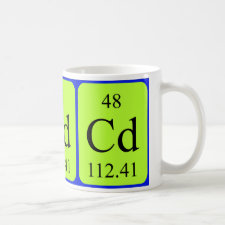
Authors: Li WM, He R, Tan L, Xu SY, Kang CC, Wei CH, Tang YW
Article Title: One-step synthesis of periodic ion imprinted mesoporous silica particles for highly specific removal of Cd2+ from mine wastewater.
Publication date: 2016
Journal: Journal of Sol-Gel Science and Technology
Volume: 78
Issue: (3)
Page numbers: 632-640.
DOI: 10.1007/s10971-016-3987-2
Abstract: Combining the advantages of MCM-41 mesoporous materials and molecularly imprinted polymers, we designed and synthesized periodic Cd2+ imprinted mesoporous silica (Cd-IMS) through a one-step hydrothermal process. Bifunctional ligand monomers [3-(γ-aminoethylamino)-propyltrimethoxysilane] and template ions (Cd2+) were immobilized in the hexagonal channel walls of MCM-41, prior to polymerization. The resultant Cd-IMS revealed a highly ordered hexagonal structure, nano-sized pore diameters and wall thicknesses, and a large surface area. In addition, this material revealed good binding properties, including a large adsorption capacity (saturation adsorption capacity of 40 mg/g), highly specific recognition ability (maximum imprinting factor of 3.0), and rapid adsorption kinetics (equilibration within 5 min). Selectivity coefficients [KCd-IMS (Cd2+)/KCd-IMS (Cu2+ or Pb2+)] of the Cd-IMS material demonstrated values of up to 2.29 and 3.08, respectively. Following six cycles of Cd2+ adsorption, the recovery of Cd-IMS remained stable at around 89.3 %, proving its recycling potential. Furthermore, Cd-IMS was successfully applied to selectively separate and remove Cd2+ from mineral wastewater samples, with high Cd2+ recovery rates. This suggests that the routine recovery of Cd2+ from wastewater may be realized in an economically viable manner
Template and target information: cadmium ion, Cd(II)
Author keywords: Ion imprinted mesoporous silica MCM-41 Cadmium(II) Adsorption Wastewater treatment



Join the Society for Molecular Imprinting

New items RSS feed
Sign-up for e-mail updates:
Choose between receiving an occasional newsletter or more frequent e-mail alerts.
Click here to go to the sign-up page.
Is your name elemental or peptidic? Enter your name and find out by clicking either of the buttons below!
Other products you may like:
 MIPdatabase
MIPdatabase









